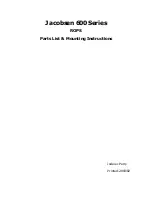
Section 6—221 Service
TROUBLESHOOTING AIDS
Diagrams
Complete circuit diagrams are given in the rear of this
manual. The component number and electrical value of
each component in this instrument both appear on the
diagrams. The portions of the circuit that are mounted on
circuit boards are enclosed with lines.
Figure 6-1 shows the location of the circuit boards
within the instrument along w ith their assembly (A)
numbers. The assembly numbers are also used on the
diagrams to aid in locating the boards. Circuit board layouts
are shown in the Diagrams section, on the back of the page
opposite the circuit diagram, to aid in cross-referencing
between the diagrams and the circuit board. Each electrical
component on the boards is identified by its circuit
number. The components are listed in the table near the
circuit board layouts. To find a component, locate it in the
component list, and note the coordinates listed w ith it.
Locate the coordinates on the layout, and the component is
located w ithin this area.
Troubleshooting Equipment
The m ajority of troubleshooting to be done on the 221
can be accomplished w ith a 20,000 ohms/volt VOM such as
a T rip lett Model 230-NA or a Simpson Model 262. Use a
dynamic semiconductor tester, such as a Tektronix Type
577 Curve Tracer system, to check the semiconductors used
in the 221. To check waveforms in this instrument, use a
test oscilloscope with a dc to five megahertz frequency
response and one m illivo lt to 50 volts/division deflection
factor.
A3
AMPLIFIER
A2
PREAMPLIFIER
A4
POWER
A1 INPUT
TRIGGER/SWEEP
Fig. 6-1. Location of circuit boards in the 221 Oscilloscope.
6-1
















































